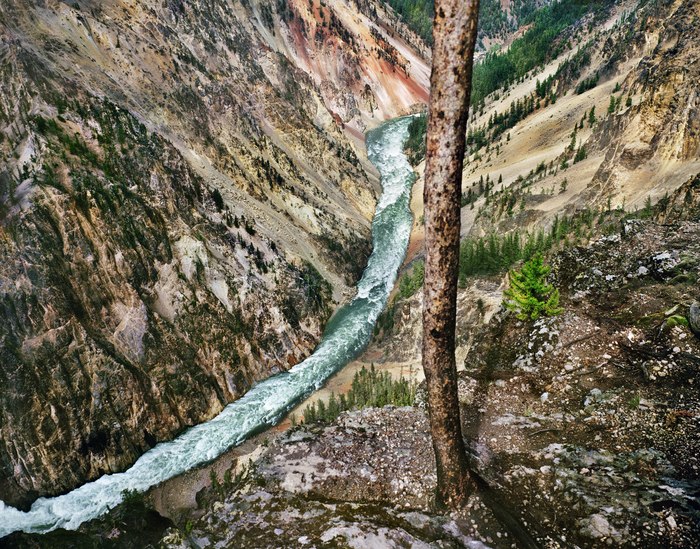“The whole land seemed restless and alive,” summarized naturalist Edwin Way Teale upon experiencing the volcanically active Yellowstone National Park. Named after the colorful rock of the park’s river canyon, the indigenous Minnetaree called it Mi tse a-da-zi, which Lewis and Clark translated as Yellow Stone during their 1806 return trip through the river's lower reaches. However, neither the Minnetaree nor the Lewis and Clark Expedition traversed the plateau region that includes the Canyon of the Yellowstone River.
The 1,200-foot-deep V-shaped canyon was carved by river flow rather than glaciation, which is more common for canyons in this high-altitude northern region. Just 12,000 years old and formed after the last ice age, this canyon is rapidly eroding. A geyser basin previously located in this area transformed rhyolite left by lava flows. As a result, the rock became soft, brittle, and more vulnerable to erosion; it also rusts, creating a spectrum of warm-toned colors. Ecologist Kristen Prinzing pointed out that this wild, undammed river is the "last river in America that Lewis and Clark would still recognize."
When first visiting the park in 1980, I had recently stopped photographing with black-and-white film and switched to color, which seemed the perfect choice given this subject matter. From my precarious perch on the canyon's rim, I could hear the echo of the 300-foot Yellowstone Falls a mile upstream, loudly plunging into the ravine, with the river rushing down its steep slope beneath me through a narrow channel. Although I was eager to photograph the falls, when I turned around, my attention was captivated by the surreal, otherworldly colors of the canyon walls.

